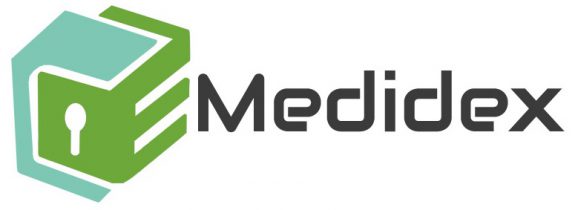Disclaimer:
Medidex is not a provider of medical services and all information is provided for the convenience of the user. No medical decisions should be made based on the information provided on this website without first consulting a licensed healthcare provider.This website is intended for persons 18 years or older. No person under 18 should consult this website without the permission of a parent or guardian.
Chloromag
Overview
What is Chloromag?
Magnesium Chloride Injection is a sterile solution ofMagnesium Chloride Hexahydrate in Water for Injectionq.s. Each mL contains Magnesium Chloride Hexahydrate200 mg, Sodium Chloride 9 mg, Benzyl Alcohol 1% asa preservative, Water for Injection, q.s. pH adjustedwith Hydrochloric Acid and/or Sodium Hydroxide. Totalosmolarity equivalent to 2951 mOsm/L.Contains 1.97 mEq of Mg++ and Cl- per mL.The structural formula is MgCl2•6H2O.
What does Chloromag look like?

What are the available doses of Chloromag?
Sorry No records found.
What should I talk to my health care provider before I take Chloromag?
Sorry No records found
How should I use Chloromag?
As an electrolyte replenisher in magnesiumdeficiencies.
What interacts with Chloromag?
Magnesium Chloride Injection should not be administeredif there is renal impairment, marked myocardial diseaseor to comatose patients.
What are the warnings of Chloromag?
Sorry No Records found
What are the precautions of Chloromag?
The usual precautions for parenteral administrationshould be observed. Administer with caution if flushingand sweating occurs. A preparation of a calcium saltshould be readily available for intravenous injectionto counteract potential serious signs of magnesiumintoxication. As long as deep tendon reflexes are activeit is probable that the patient will not develop respiratoryparalysis. Respiration and blood pressure should becarefully observed during and after administration ofMagnesium Chloride Injection.
What are the side effects of Chloromag?
Sorry No records found
What should I look out for while using Chloromag?
Magnesium Chloride Injection should not be administeredif there is renal impairment, marked myocardial diseaseor to comatose patients.
Do not use if a precipitate is present.
What might happen if I take too much Chloromag?
Sorry No Records found
How should I store and handle Chloromag?
Sorry No Records found
Clinical Information
Chemical Structure
No Image foundClinical Pharmacology
Non-Clinical Toxicology
Magnesium Chloride Injection should not be administeredif there is renal impairment, marked myocardial diseaseor to comatose patients.Do not use if a precipitate is present.
Ketoconazole is a potent inhibitor of the cytochrome P450 3A4 enzyme system. Coadministration of ketoconazole tablets and drugs primarily metabolized by the cytochrome P450 3A4 enzyme system may result in increased plasma concentrations of the drugs that could increase or prolong both therapeutic and adverse effects. Therefore, unless otherwise specified, appropriate dosage adjustments may be necessary. The following drug interactions have been identified involving ketoconazole tablets and other drugs metabolized by the cytochrome P450 enzyme system.
Ketoconazole tablets inhibit the metabolism of terfenadine, resulting in an increased plasma concentration of terfenadine and a delay in the elimination of its acid metabolite. The increased plasma concentration of terfenadine or its metabolite may result in prolonged QT intervals. (See , , and sections.)
Pharmacokinetic data indicate that oral ketoconazole inhibits the metabolism of astemizole, resulting in elevated plasma levels of astemizole and its active metabolite desmethylastemizole which may prolong QT intervals. Coadministration of astemizole with ketoconazole tablets is therefore contraindicated. (See , , and sections.)
Human pharmacokinetic data indicate that oral ketoconazole potentially inhibits the metabolism of cisapride resulting in a mean eight-fold increase in AUC of cisapride. Data suggest that coadministration of oral ketoconazole and cisapride can result in prolongation of the QT interval on the ECG. Therefore concomitant administration of ketoconazole tablets with cisapride is contraindicated. (See , , and sections.)
Ketoconazole tablets may alter the metabolism of cyclosporine, tacrolimus, and methylprednisolone, resulting in elevated plasma concentrations of the latter drugs. Dosage adjustment may be required if cyclosporine, tacrolimus, or methylprednisolone are given concomitantly with ketoconazole tablets.
Coadministration of ketoconazole tablets with midazolam and triazolam has resulted in elevated plasma concentrations of the latter two drugs. This may potentiate and prolong hypnotic and sedative effects, especially with repeated dosing or chronic administration of these agents. These agents should not be used in patients treated with ketoconazole tablets. If midazolam is administered parenterally, special precaution is required since the sedative effect may be prolonged.
Rare cases of elevated plasma concentrations of digoxin have been reported. It is not clear whether this was due to the combination of therapy. It is, therefore, advisable to monitor digoxin concentrations in patients receiving ketoconazole.
When taken orally, imidazole compounds like ketoconazole may enhance the anticoagulant effect of coumarin-like drugs. In simultaneous treatment with imidazole drugs and coumarin drugs, the anticoagulant effect should be carefully titrated and monitored.
Because severe hypoglycemia has been reported in patients concomitantly receiving oral miconazole (an imidazole) and oral hypoglycemic agents, such a potential interaction involving the latter agents when used concomitantly with ketoconazole tablets (an imidazole) can not be ruled out.
Concomitant administration of ketoconazole tablets with phenytoin may alter the metabolism of one or both of the drugs. It is suggested to monitor both ketoconazole and phenytoin.
Concomitant administration of rifampin with ketoconazole tablets reduces the blood levels of the latter. INH (isoniazid) is also reported to affect ketoconazole concentrations adversely. These drugs should not be given concomitantly.
After the coadministration of 200 mg oral ketoconazole twice daily and one 20 mg dose of loratadine to 11 subjects, the AUC and C of loratadine averaged 302% (± 142 S.D.) and 251% (± 68 S.D.), respectively, of those obtained after co-treatment with placebo. The AUC and C of descarboethoxyloratadine, an active metabolite, averaged 155% (± 27 S.D.) and 141% (± 35 S.D.), respectively. However, no related changes were noted in the QT on ECG taken at 2, 6, and 24 hours after the coadministration. Also, there were no clinically significant differences in adverse events when loratadine was administered with or without ketoconazole.
Rare cases of a disulfiram-like reaction to alcohol have been reported. These experiences have been characterized by flushing, rash, peripheral edema, nausea, and headache. Symptoms resolved within a few hours.
The usual precautions for parenteral administrationshould be observed. Administer with caution if flushingand sweating occurs. A preparation of a calcium saltshould be readily available for intravenous injectionto counteract potential serious signs of magnesiumintoxication. As long as deep tendon reflexes are activeit is probable that the patient will not develop respiratoryparalysis. Respiration and blood pressure should becarefully observed during and after administration ofMagnesium Chloride Injection.
Reference
This information is obtained from the National Institute of Health's Standard Packaging Label drug database.
"https://dailymed.nlm.nih.gov/dailymed/"
While we update our database periodically, we cannot guarantee it is always updated to the latest version.
Review
Professional
Clonazepam Description Each single-scored tablet, for oral administration, contains 0.5 mg, 1 mg, or 2 mg Clonazepam, USP, a benzodiazepine. Each tablet also contains corn starch, lactose monohydrate, magnesium stearate, microcrystalline cellulose, and povidone. Clonazepam tablets USP 0.5 mg contain Yellow D&C No. 10 Aluminum Lake. Clonazepam tablets USP 1 mg contain Yellow D&C No. 10 Aluminum Lake, as well as FD&C Blue No. 1 Aluminum Lake. Chemically, Clonazepam, USP is 5-(o-chlorophenyl)-1,3-dihydro-7-nitro-2H-1,4-benzodiazepin-2-one. It is a light yellow crystalline powder. It has the following structural formula: C15H10ClN3O3 M.W. 315.72Tips
Tips
Interactions
Interactions
A total of 440 drugs (1549 brand and generic names) are known to interact with Imbruvica (ibrutinib). 228 major drug interactions (854 brand and generic names) 210 moderate drug interactions (691 brand and generic names) 2 minor drug interactions (4 brand and generic names) Show all medications in the database that may interact with Imbruvica (ibrutinib).

